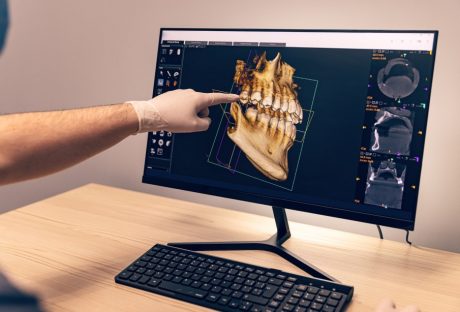The healthcare profession is brimming with obstacles and challenges, and the recent pandemic has further added to them. Medical professionals work gruelingly long hours to ensure patient well-being and safety. However, most of these obstacles and challenges are typically seen in a particular sub-division of the healthcare field: the nursing field. Undoubtedly, the nursing profession is not for individuals who are faint of heart.
Moreover, to succeed as a nurse and perform your duties with utmost efficiency, you must have the drive, passion, and knack for helping people in need. Some challenges plaguing the nursing field include difficulty acquiring further education, understaffing issues, and overtime work. Likewise, workplace stress and hazard are also growing concerns for medical workers.
Whatever issues the nursing field faces, nurses remain a vital part of the world’s healthcare workforce. They put other’s needs first and dedicate their entire lives to helping their patients. For instance, the Covid-19 pandemic also made us realize how essential nurses are. However, before you start a career in the nursing field, knowing about all the challenges you’ll face while working is vital.
So, let’s determine some of the biggest challenges in the nursing field that aspirants should know.
1. Difficulty continuing education
The healthcare industry requires individuals to remain up-to-date with the latest medical practices, techniques, and procedures. However, as nurses serve as the first point of physical contact for patients, these medical professionals also need to polish their soft skills.
Therefore, expanding your knowledge base and honing soft skills are critical components of becoming a successful nurse in today’s competitive healthcare setting. And to do such a thing, they must invest time and money in continuing education and obtaining advanced nursing academic credentials.
Unfortunately, acquiring further education while working as a nurse is no cakewalk. As these healthcare professionals work for long, grueling hours, sometimes 24-hour shifts, taking out time for studies can be challenging.
However, if you’re a nurse striving to climb the ladder to success and seeking career advancement, eLearning can benefit you. You can enroll in masters of nursing online programs and study with ease while managing your workload. An online nursing degree will provide you with the flexibility and convenience of learning from home or even work.
2. Overtime issues
Due to high employee turnover and understaffing, aspirants need to be aware of overtime before diving into the nursing profession. Many nurses state that healthcare facilities utilize overtime to counter the after-effects of understaffing. Unfortunately, this usually leads to overworked nurses, resulting in medical errors, treatment inaccuracies, inaccurate diagnoses, driving away aspiring candidates from the nursing field altogether.
That said, medical facility owners and healthcare leaders must focus on overstaffing issues and try to solve them with a different approach. A viable way to do this is by hiring more competent nursing staff. In addition, they must encourage aspiring medical students to give nursing a go over other health-related careers. After all, nurses are frontline warriors, working at the heart and soul of every healthcare organization worldwide.
3. Understaffing issues
Short staffing is amongst the most common issues in the nursing field. An AMN Healthcare survey shows that about seventy-two percent of healthcare leaders say that they are understaffed in the nursing department. Not to mention, this issue is growing with every passing day, especially since the pandemic struck.
Furthermore, the BLS states that there will be a demand for one billion nurses around 2022 due to the rise in diseases and viruses, and most importantly, Covid-19. Staffing issues usually affect patient health and safety and drastically lower the quality of care at healthcare facilities. Moreover, it can also result in increased injury rates, fatigue, and work pressure.
4. Workplace stress
Healthcare professionals such as nurses and doctors face work-related stress and burnout, primarily stemming from the unpredictable nature of their work. It mainly affects nurses dealing with high-volume urban departments, senior care, acute psychiatric services, and more. Not to mention, excessive workload and fatigue are ever-present in every healthcare workplace. And nurses bear their fair share of burnout issues, as discussed above.
That said, such a thing shouldn’t put off aspiring candidates. ANA, OSHA, and other government organizations work tirelessly to control workplace stress through education, guidelines, and regulations. After all, nursing staff shouldn’t have to deal with burnout, whether it is because of their workload or job nature.
5. Workplace hazards
Every workplace in every field has its fair share of hazards. However, the nursing profession, in particular, faces more than usual. Some potential hazards include exposure to pathogens, injuries, contracting viruses, and other germs. Not to mention, these healthcare professionals are at constant risk of hazards from patients carrying the deadliest viruses.
The Covid-19 pandemic serves as an unfortunate reminder of how working in the healthcare sector can prove fatal. Many nurses and frontline warriors lost their lives battling the virus and serving the ailing. However, it explains why nursing is one of the most prestigious professions of our era. Nurses devote endless hours and put their lives at stake to ensure the well-being of their community and people.
Conclusion
Recognizing the obstacles and the challenges that the nursing field contains is the first step. However, the second, and probably the most important, is overcoming these challenges to ensure you advance in your nursing career. After all, nurses are crucial to every healthcare facility out there. There is no better way to help humankind than to take up the nursing profession.
That said, you might find it challenging to overcome these obstacles initially. But if you remain persistent and focus on your end goal, you’ll reap countless rewards.
Read Also:

























